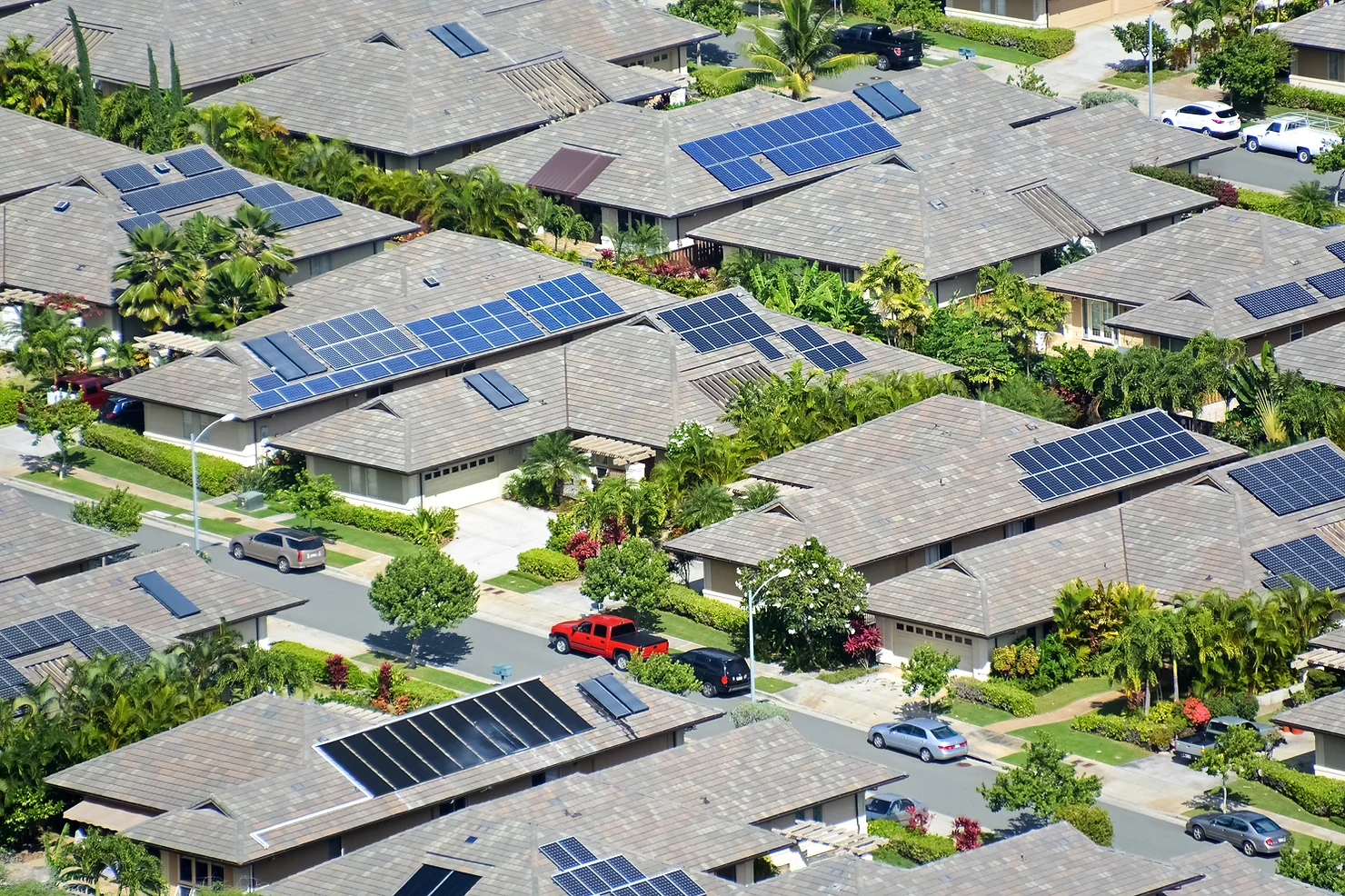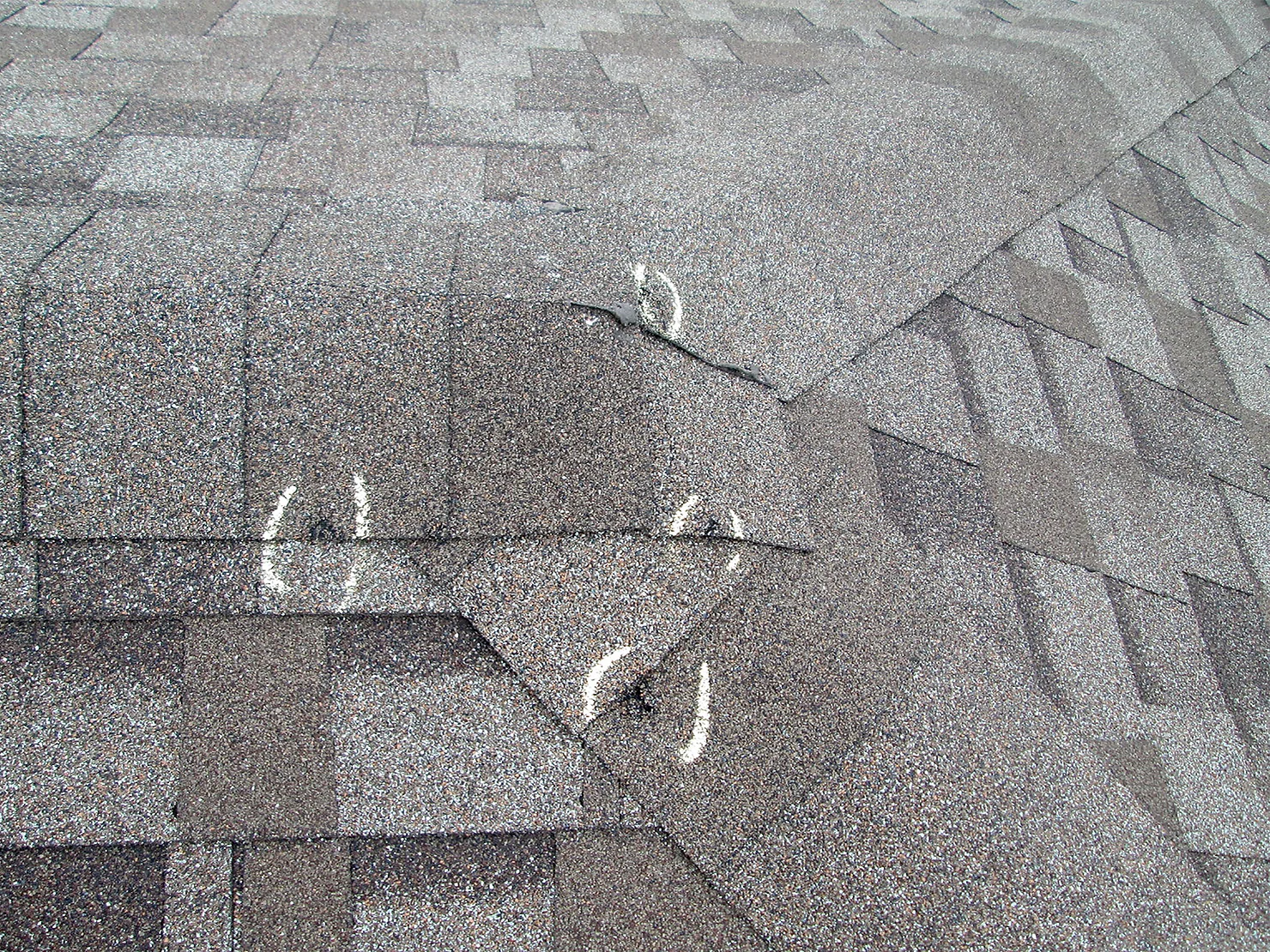
Inflation Reduction Act Makes Solar Energy More Affordable Than Ever
Discover how the Inflation Reduction Act is driving down the cost of solar energy and making it more affordable than …

Hailstorms can come out of the woodwork and cause colossal damage to your property, including your roof. When a massive hailstorm blasts your home at top speed, your roof will almost certainly bear most of the brunt.
If you want to know what damage hail can do to your roof and what the damage looks like in different types of roofs, keep reading to learn all you can about it. In addition, we’ll give you valuable tips on what to do to prevent hail damage on your roof.
Wind speed, wind direction, hail speed, roof material, slope, and age of roof material all impact the possible roof damage that might happen during a hailstorm. Roof damage caused by hail is devastating since it causes leaks and other problems.
Hail roof damage can be cosmetic or structural, but it’s cosmetic damage that’s often more serious than it looks. Things such as bruises, granule loss, edges, and punctures can cause serious problems even if they seem cosmetic initially.
Here are some types of roof damage caused by hailstorms:
High winds or the impact of hard nails can cause cracks in your shingles, and this can result in tears and exposure, leaving bare spots on your roof. As such, cracked shingles can’t effectively weatherproof your roof.
When shingles lose their granules, their asphalt coating gets exposed to the weather, leading to faster aging of shingles. After a hailstorm, be sure to check your downspouts and gutters to see if your shingles have lost any granules.
The impact of hail on your shingles can shatter their surface, leading it to break the fiberglass mat beneath.
It can be pretty hard to detect fractured fiberglass because this usually needs a trained eye. The impact of hail can cause fractured fiberglass mats, resulting in cracks and tears.
Hail and high winds can weaken your shingles’ seal integrity. A weakened seal causes shingles to be blown off, exposing your roof to the elements. When a shingle is damaged, this permanently compromises its integrity, leading to leaks and possible tearing of adjacent shingles.
Once you know these common types of roof damage caused by hail, you can begin searching for damage signs on your home after a hailstorm.
The hail size is the easiest way to know what sort of damage your roof may have. While not a failsafe method of predicting hailstorm damage, understanding the different hail sizes and how they can affect your property is an excellent place to begin.
While ¾” is the smallest size of hail you can measure, it might still be devastating based on the accompanying wind speeds. This hail size typically damages metal fascia, vinyl siding, window screens, and paint on the deck.
It can also damage downspouts and gutters and displace granules on asphalt shingles. Due to its small size, homeowners often fail to detect the damage it causes.
For 1″ hail, you can begin to see significant damage to fascia, gutters, siding, and bruised shingle underlayment. The wind speed will affect the extent of roof damage, and you’ll also notice damage similar to that caused by smaller hail sizes.
With an increase of just ¼”, this hail size causes much more serious roof damage. Parts of your home exposed to this hail will likely resemble Swiss cheese. This hail size can cause severe damage, even without the help of wind.
This hail size causes severe damage to homes. Depending on how much hail has fallen, how long it has fallen, and the speed of the accompanying wind, your property could be severely damaged.
This is the size of hail that can damage the softer parts of your roof, like plastic roof vents or ridge caps. Combined with wind, 1¾ – 2″ hail can completely tear off a home’s siding, damage most kinds of metal fixtures, and crack windows.
Any hail size of 2″ or over will cause severe and extensive damage to your home. At this point, it’s a question of where the damage to property is. It’s recommended that you call in a roofer with insurance experience right away after this kind of hailstorm.
When you wake up one morning and notice some damage to your car, it could also mean some damage to your roof!
The damage to your roof will depend on the size and strength of the hail. If the hailstone is smaller than a golf ball, you might notice the following damage to your roof’s surface and exterior siding:
If hail has damaged your roof, it can be hard to tell whether this can affect your roof’s performance or if the damage is just cosmetic.
If water is leaking through your roof due to hail damage, then this indicates a performance problem, and you should make sure to fix it as soon as you can to prevent severe damage to your property.
If your roof shingles have suffered granule loss due to hail damage, it might also affect their performance, not to mention the aesthetics. Asphalt shingle granules help shield the asphalt from ultraviolet light damage caused by sunlight.
While your roof might not leak now, shingles without granules risk failing too soon.
Of course, you can fix hail damage to your roof. Depending on the gravity of the damage, fixing a hail-damaged roof can be as complicated as replacing the entire roof or as easy as repairing a single shingle.
This massive difference in repairs is why we recommend that you have your roof checked by a professional roofing contractor after a severe hailstorm. An experienced roofing contractor can swiftly assess the extent of the damage.
Most roofing contractors also offer free inspections, helping ease your fears if you believe your roof has been destroyed during a recent hailstorm. If you aren’t sure, you need a roof inspection to check for hail damage, looking for damage signs like the ones we’ve mentioned above.
If you notice more than one case of damage to your exterior siding or a dented gutter, consider calling in an expert to inspect your roof for hail damage.
Shingle damage may be pretty mild or severe. While severe damage is easy to notice, it’s vitally important to identify mild damage and choose the right fix for your roof.
Yes, your insurance company can cover hailstorm damage; however, your coverage will depend on the size of your budget.
To prevent damage to your roof due to a hailstorm, protect everything that’s on your rooftop. Prevention maintenance is better than the cure, as they say!
Hailstorms are devastating and can cause severe damage to your home’s roof. It’s essential to be prepared for them to minimize their impact.
Roof replacement isn’t a small project. While it’s vitally to have it done, when should it be done? When a hailstorm occurs in your area, it’s best to contact a professional roof contractor or your home insurance provider for an estimate.
Even mild hail can cause damage to sections of your roof. Over time, a small damaged area of your roof can extend to the entire roof, forcing you to have your entire roof replaced. But if you can catch the problem early enough, be sure to contact a roofing repair service to come in and repair it.